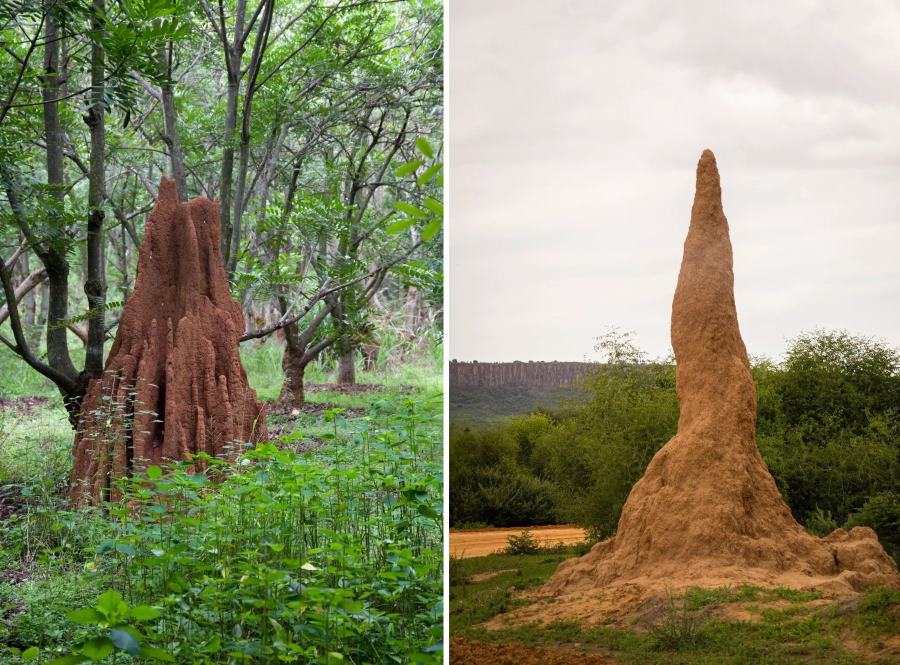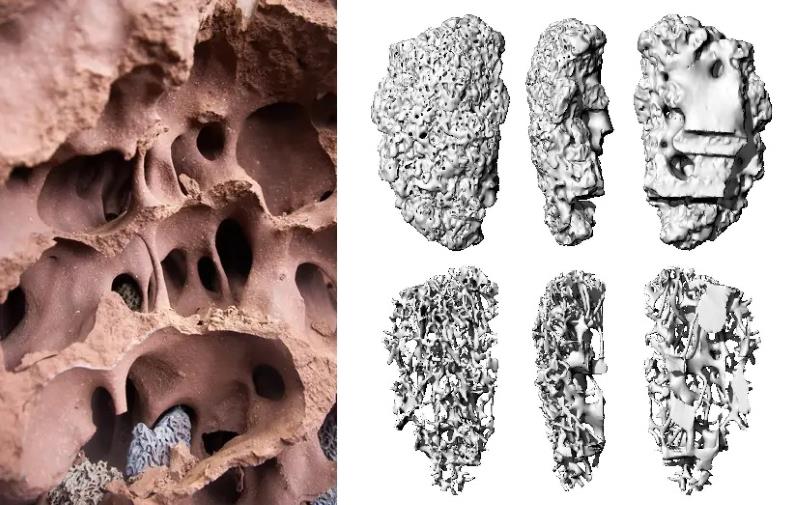Learning from termites: Building better, energy-saving homes
When we think of architects and engineers designing the buildings of the future, termites might not be the first creatures that come to mind.
However, two scientists have revealed that these tiny insects, specifically the termite species Macrotermes michaelseni from Namibia, hold valuable lessons for creating energy-efficient, comfortable interior climates in our homes and buildings.
This discovery could potentially revolutionize the way we approach architecture and help reduce the carbon footprint associated with air conditioning.
Termites, often considered pests, are actually ecosystem engineers of immense significance. Their colossal mounds, towering up to eight meters high, have evolved over tens of millions of years through natural selection.
Among the key features of these mounds is the "egress complex," an intricate network of interconnected tunnels that plays a pivotal role in maintaining the mound's interior environment.

Termite mounds in India (left) and Namibia. Credit: David Andréen
Researchers Dr. David Andréen and Dr. Rupert Soar studied these remarkable structures and discovered that the egress complex has the potential to transform the way we think about ventilation and temperature control in buildings. Their study, titled “Termite-inspired metamaterials for flow-active building envelopes” and published in the Frontiers in Materials journal, focused on understanding how the layout of these tunnels allows for efficient airflow, heat distribution, and moisture regulation.
Nature's blueprint for comfort
One of the most significant findings from this study is how the egress complex facilitates oscillating airflow patterns.
Using 3D-printed models and simulations, Andréen and Soar observed that wind oscillations within the tunnels enhanced mass transfer of air for ventilation.
These oscillations created turbulence inside the tunnels, effectively carrying away respiratory gases and excess moisture. This natural ventilation process helps maintain a delicate balance of temperature and humidity inside the mound without impeding the flow of fresh air in and stale air out.
This discovery has significant implications for human architecture. Unlike traditional HVAC systems that often struggle to maintain ideal indoor conditions, the egress complex offers a structured interface for the exchange of respiratory gases, driven by differences in concentration. In essence, it allows buildings to "breathe" naturally, ensuring interior comfort without relying on energy-intensive air conditioning.
Applying the termite wisdom
The potential applications of these findings in human architecture are exciting. Andréen and Soar envision a future where buildings are constructed with walls containing networks similar to the egress complex. Emerging technologies like powder bed printers could make it possible to embed sensors and actuators within these structures, requiring only minimal energy for efficient airflow management.

Inside a termite mound. Credit: David Andréen
Furthermore, this research highlights the importance of mimicking nature's complexity in construction. As construction-scale 3D printing becomes more sophisticated, architects and engineers can design buildings that replicate the intricate structures found in nature, such as the egress complex.
This approach could simultaneously address multiple challenges, including maintaining interior comfort, regulating the flow of respiratory gases, and managing moisture within the building envelope.
The study appeared thanks to funding from the Engineering and Physical Sciences Research Council, the Swedish Research Council, and the Human Frontier Science Program.
Scientists also esteem the termites for being excellent fighters and farmers.
***
Feel free to support our small office: RO50BTRLEURCRT0490900501 (IBAN in euros), for Rudeana SRL-D (beneficiary in Romania).
Not feeling like donating? Then click on banners on our website to generate ad revenue. Any help is welcome.







